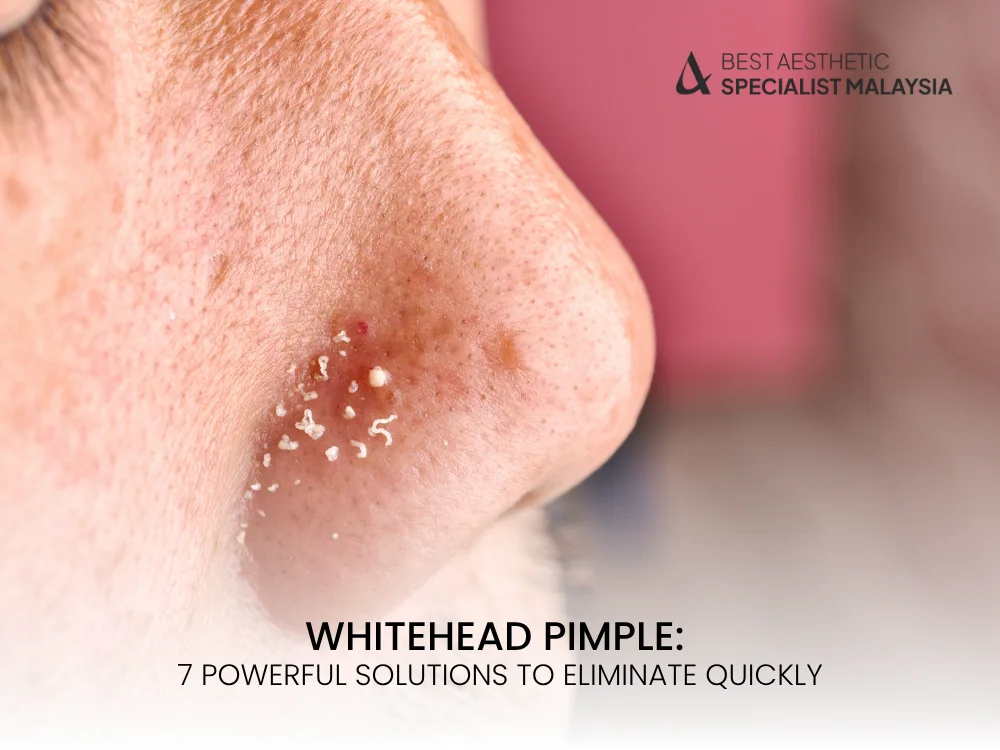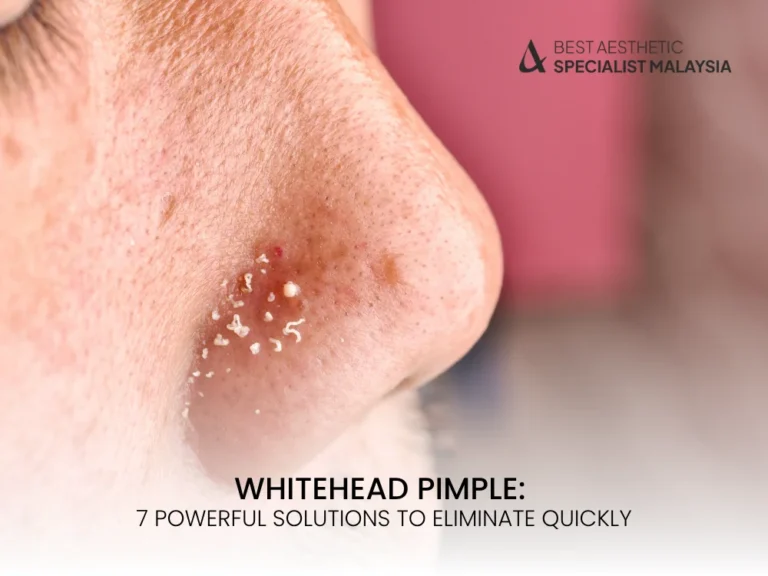Dealing with a whitehead pimple can be frustrating. Whether it’s a single bump or a cluster of breakouts, whiteheads are among the most common and stubborn types of acne. They form when dead skin cells, oil, and bacteria clog your pores, leading to small, flesh-colored bumps that refuse to budge. The good news? With the right knowledge and products, you can treat and prevent whitehead pimples effectively. In this article, we’ll explore dermatologist-approved methods, home remedies, and prevention strategies for maintaining clearer, healthier skin.
What is a Whitehead Pimple?
A whitehead pimple is a type of acne lesion that forms when a pore becomes clogged with sebum (oil), dead skin cells, and sometimes bacteria. Unlike blackheads, whiteheads are closed at the surface, which gives them their signature white or flesh-toned appearance.
Whiteheads are most commonly found on the face—especially around the nose, forehead, and chin—but can also appear on the chest, shoulders, and back.
Causes of Whitehead Pimples
Understanding what triggers whiteheads can help in managing and preventing them. Key causes include:
- Excess Sebum Production: Common during puberty and hormonal fluctuations.
- Poor Skincare Habits: Not cleansing properly or over-exfoliating.
- Comedogenic Products: Ingredients that clog pores and cause breakouts.
- Hormonal Imbalances: Often related to menstruation, pregnancy, or PCOS.
- Dietary Factors: Dairy, high-glycemic foods, and sugary diets can worsen acne.

Over-the-Counter Treatments for Whitehead Pimples
Salicylic Acid
A beta hydroxy acid (BHA) that penetrates pores and helps clear out the debris causing whiteheads. Available in cleansers, toners, and spot treatments.
Benzoyl Peroxide
An antibacterial agent that reduces inflammation and kills acne-causing bacteria. Ideal for treating infected whiteheads and preventing new ones.
Retinoids
These vitamin A derivatives increase cell turnover, unclog pores, and improve overall skin texture. Start with lower concentrations to avoid irritation.
Topical and Prescription Solutions
If OTC products aren’t enough, dermatologists may recommend:
Topical Antibiotics
Clindamycin or erythromycin can reduce bacteria and inflammation when combined with other treatments.
Oral Medications
- Antibiotics: Short-term use to reduce bacteria and inflammation.
- Hormonal Treatments: Birth control pills or spironolactone for hormone-driven acne.
- Isotretinoin: For severe, persistent acne with significant whitehead presence.
Home Remedies for Whitehead Pimple Removal
Natural treatments can support conventional methods. Popular options include:
Tea Tree Oil
A natural antibacterial that helps reduce whitehead pimples when diluted and applied with a cotton swab.
Honey and Cinnamon Mask
Both ingredients have antimicrobial properties. This combo helps calm inflammation and may reduce acne-causing bacteria.
Aloe Vera
A soothing gel that promotes healing and reduces redness. Great for irritated or inflamed whitehead pimples.
Best Skincare Practices to Prevent Whitehead Pimples
Double Cleansing
Start with an oil-based cleanser to remove makeup, followed by a gentle foaming cleanser to clean the skin thoroughly.
Exfoliate Wisely
Use chemical exfoliants like AHAs and BHAs 2–3 times a week. Avoid harsh scrubs that can damage skin and worsen breakouts.
Moisturize with Non-Comedogenic Products
Even oily skin needs hydration. Choose lightweight, oil-free moisturizers to maintain barrier function without clogging pores.
Do’s and Don’ts of Dealing with a Whitehead Pimple
Do:
- Use clean hands when applying products.
- Keep your pillowcases and towels clean.
- Spot-treat whiteheads with salicylic acid or benzoyl peroxide.
Don’t:
- Pop or squeeze whiteheads. This increases the risk of scarring and infection.
- Overuse drying products, which can trigger more oil production.
- Skip sunscreen—some acne treatments increase sun sensitivity.
Lifestyle Habits That Help Manage Whitehead Pimples
Balanced Diet
Focus on whole foods, lean proteins, and low-glycemic carbs. Reduce sugar, dairy, and processed foods that may trigger breakouts.
Hydration
Drink at least 8 glasses of water a day to flush out toxins and keep skin cells healthy.
Stress Management
High stress can elevate cortisol levels, worsening oil production and acne. Incorporate yoga, meditation, or regular exercise into your routine.
How Long Does It Take to Clear a Whitehead Pimple?
Results vary depending on the severity and treatment method. Typically:
- OTC treatments: 3–7 days
- Prescription products: 2–6 weeks
- Lifestyle changes: noticeable improvements in 4–8 weeks
Consistency is key—stick to your regimen and be patient with your skin.
When to See a Dermatologist
If whitehead pimples are painful, recurrent, or resistant to OTC treatments, consult a dermatologist. They can assess your skin condition and develop a customized treatment plan tailored to your needs.
FAQs About Whitehead Pimples
1. What’s the fastest way to get rid of a whitehead pimple?
Use a spot treatment with salicylic acid or benzoyl peroxide, and avoid touching the area. Apply ice to reduce swelling if needed.
2. Are whiteheads a sign of dirty skin?
Not necessarily. Whiteheads result from clogged pores, not poor hygiene. Over-cleansing can actually worsen the problem.
3. Can makeup cause whitehead pimples?
Yes. Using comedogenic (pore-clogging) makeup can lead to whiteheads. Always opt for non-comedogenic and oil-free formulas.
4. Is it okay to pop a whitehead pimple?
No. Popping can introduce bacteria, cause inflammation, and lead to scarring.
5. How do I prevent whitehead pimples from returning?
Maintain a consistent skincare routine, use non-comedogenic products, and avoid known dietary or hormonal triggers.
6. Are whitehead pimples and blackheads the same?
No. Whiteheads are closed comedones, while blackheads are open comedones exposed to air, which causes oxidation and dark color.

